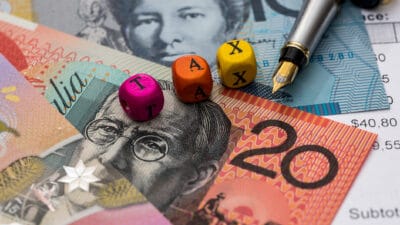I'm no Nostradamus.
I possess no special extra-sensory perception, and my crystal ball is broken. Truth be told, it's never worked.
But I've managed, thus far (and, as ever, past performance is no guarantee of future returns) to deliver market-beating performance over the last 9 or so years at Motley Fool Share Advisor.
I say that not to brag, but to differentiate between the power of 'specific prediction' and 'a process that, on average and over time, has tended to deliver market-beating results'.
The former is fortune telling. The latter is a combination of analysis, research and pattern recognition: otherwise known, in the trade, as 'fundamental analysis': looking at a company and assessing its attractiveness based on things like financial statements, business model and competitive position (among much else).
So what I'm about to share is not a prediction. As Keynes famously said, 'the market can remain irrational longer than you can remain solvent' — which makes predictions, frankly, silly.
Instead, I'm going to use fundamentals to share a view of how, on balance, I think a given situation is likely to unfold.
That situation is one of the great Australian export commodities: iron ore.
I can't tell you how often I've been asked about iron ore in the past couple of weeks. It is riding sky-high at the moment, selling for around US$156 per tonne as I write this.
Everyone wants to know how they can get on board.
My general advice is: Don't.
And here's why.
While the price is over US$150 per tonne at the moment, Fortescue Metals Group Limited (ASX: FMG) reported cash cost of production was under US$13 per tonne in the last financial year.
That gives it — assuming the cash cost hasn't materially moved recently — a cash profit margin of over 90%.
That is spectacularly, eye-wateringly good.
It's also — in all probability — unsustainable.
Why?
Well, generally commodities are pretty substitutable. With some allowances for quality, grade, contracts and reputation, my iron ore is the same as your iron ore, and that's the same as their iron ore.
Now, when prices are low, it pays to be the lowest cost producer. You want to be the 'last man standing' if a price war breaks out.
But when the price is US$150 a tonne? It's an exaggeration to say that just anyone could make money mining iron ore… but only a little.
Now, let me take you back to high school economics.
Remember supply and demand?
They usually — and especially, for an almost-perfectly substitutable product — find an equilibrium at a given price.
Supply matches demand.
Now, let's say demand starts to rise.
In the first instance, prices rise, as more buyers compete (pay more) for a limited quantity.
But what happens next?
Well, absent market-failure, the response to higher prices is… increased supply.
And step three in our little example?
Increased supply acts to push prices back down.
Now, my guess is that we're currently at Step 2.
Increased demand (and, in our increasingly 'financialised' world, futures traders' expectations of increased demand) have pushed prices up.
A lot.
Now, it's possible there's no reasonable likelihood of increased supply. Maybe the miners will act rationally and simply not mine any extra iron ore, keeping demand down.
But if so, that'll be the first time I know of, outside of the artificially constrained OPEC oil cartel, and the diamond industry.
Yes, there's a first time for everything, but that doesn't make it particularly likely.
So, on balance, I think it's likely that supply will, over time, increase.
And that makes it likely, in my view, that current prices are unsustainably high.
Does that mean they can't go higher, in the short term? No.
Does that mean I know when they'll fall? Or how fast and how far? No.
But here's the thing about investing: we should be looking for investment ideas where the probabilities are in our favour.
The probability of iron ore cash margins remaining at 90% is about as low as Harold Holt wandering up Portsea Beach on Christmas Day.
Which means buying — or owning — shares in iron ore miners right now is a tough case to make.
If you buy now maybe you get lucky. Maybe iron ore prices go up and you get in and out at the right time.
Maybe.
But it's not a very high percentage play.
And long term wealth is rarely made by making low percentage shots.
For the record, I think Fortescue is one of the great modern Australian business success stories. What Andrew Forrest and team have achieved is sensational.
But that doesn't mean you should buy shares in it — or any other iron ore miner — when the commodity price is unsustainably high.
Miners' shares, like commodity prices, can always go higher from here. It's always possible.
But if I was trying to create long-term wealth, I wouldn't be buying shares in a company whose major commodity is trading at what I think are unsustainably high prices.
Instead?
I thought you'd never ask.
You want to find businesses with pricing power.
Companies that aren't selling commodity products.
Businesses with strong brands that are in high demand.
You're looking for differentiation. Growth. Quality.
In short: a company with a sustainable competitive advantage.
And, ideally, an attractive price.
(For the record, I'm on Warren Buffett's side when he says he'd prioritise quality over price, but I'll take 'both' whenever I can find them together in the one company.)
You might, like me, scoff at the fact Apple is about to start selling $900 headphones.
"How much?" you ask, in head-shaking disbelief.
And yet, people will pay that price. Many, many people.
Are they silly? Maybe. I can think of a couple of hundred things I'd spend 900 big ones on, before some new headphones.
But then again, plenty of people would disagree with my purchases, too.
My point is that Apple will sell heaps of those things.
Because the tech is 30 times better than other headphones you can get at JB HiFi?
Nah.
Because they just love the brand. They'll convince themselves they're 30 times better… because that's the impact a brand can have on our rational minds.
I don't own Apple, for the record. But the example of pure, raw, brand power is hard to beat.
Don't get me wrong: Fortescue is a great business with a bright future. Those cash costs are stunningly low. What they've achieved is astonishing.
But paying a high price for shares of a company currently enjoying a remarkably — and unsustainably — high price for its product is something else entirely.
Fool on!









